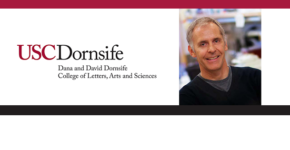 On USC Dornsife Week: How are memories formed?
On USC Dornsife Week: How are memories formed?
Donald Arnold, professor of biological sciences and biomedical engineering, takes us a step closer to finding out.
Professor Arnold is the principal investigator at the Arnold Laboratory and professor of Molecular and Computational Biology and Biomedical Engineering at USC Dornsife. He received his Ph.D. Biomedical Engineering from Johns Hopkins University, and a B.A.Sc. in Engineering Physics from the University of Toronto. He studies how information is encoded in synapses. The Arnold laboratory has developed novel recombinant probes that allow us to visualize and ablate synaptic connections in living organisms.
Mapping Synapses and the Future of Memory Treatments
Over 130 years ago, Santiago Ramón y Cajal proposed that our brains store information by rearranging connections between neurons. Since then, scientists have struggled to visualize and map these synapses due to their small size and similar appearance to surrounding tissue. My team developed a new imaging technique that may shed light on how memories are formed and stored in the brain.
We conducted an experiment with zebrafish, using classical conditioning to form associative memories. Zebra fish were chosen due to their transparency and large enough brains, functioning similarly to those of humans. To visualize the synapses, we genetically engineered neurons with fluorescent proteins that bind to synapses, making them visible under a custom-built microscope.
Comparing 3D synapse maps before and after memory formation revealed that neurons in one brain region formed new synapses, while neurons in another region lost synapses. Surprisingly, changes in the strength of existing connections were small and indistinguishable from control fish that did not form new memories. This suggests that forming an associative memory involves synapse formation and loss, but not necessarily changes in the strength of existing synapses.
Our findings have implications for understanding and treating neuropsychiatric conditions like PTSD and addiction. Associative memories, like those induced by classical conditioning, are thought to be similar to traumatic memories that cause PTSD. Exposure therapy, the most common treatment for PTSD, indirectly remodels brain synapses, but patients are prone to relapse.
Our laboratory has developed technology to remove synapses without damaging neurons. We plan to use similar methods to remove synapses in zebrafish or mice to see whether this alters associative memories. In the future, it might be possible to physically erase the associative memories underlying conditions like PTSD and addiction, but ethical and technical challenges must be addressed before any such treatment is considered.
Read More:
[The Conversation] – Where are memories stored in the brain? New research suggests they may be in the connections between your brain cells

